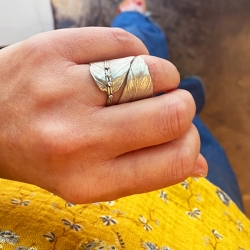Scarab necklaces in Fine Stones: Turquoise, Jasper, Amazonite, Onyx, Malachite, Lapis Lazuli, Carnelian, Rose Quartz ...
A powerful lucky charm from ancestral Egyptian wisdom, the Egyptian Scarab is used today to attract good luck and prosperity, but also to promote harmony and balance.
In Pharaonic times, the Egyptians believed that the sun was born from a giant scarab. Every morning, the god Khepri (god with the head of a scarab) brings the sun back to life. He rolls it in front of him until he disappears into the next world at night and then reappears the next day. It is the symbol of transformation, resurrection and renewal in the Egyptian religion. Scarab-shaped amulets were placed on the side of the heart in the mummy's bandages. Some believe the purpose was to prevent the heart from testifying against the deceased at Judgment, others say it allowed the resurrection. This is why these days, beetles are considered to be lucky charms.
In China, it has the same meaning. "The scarab, says the Treatise on the Golden Flower, rolls its ball, from which life is born." The Taoist glosses also offer the activity of the scarab as an example of the seemingly unskillful skill and seemingly imperfect perfection of which Lao Tzu speaks and which are the criteria of Wisdom.
In the Mayan Chilam Balam, the scarab represented the mud of the earth in the material and moral sense, called to be converted into a divinity.








